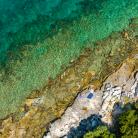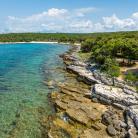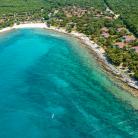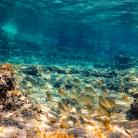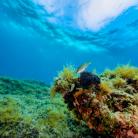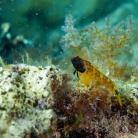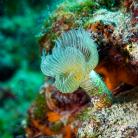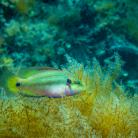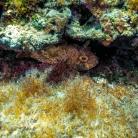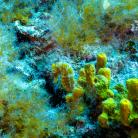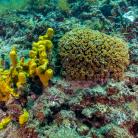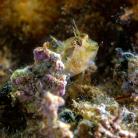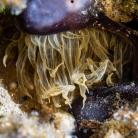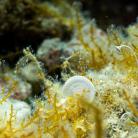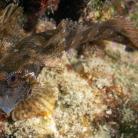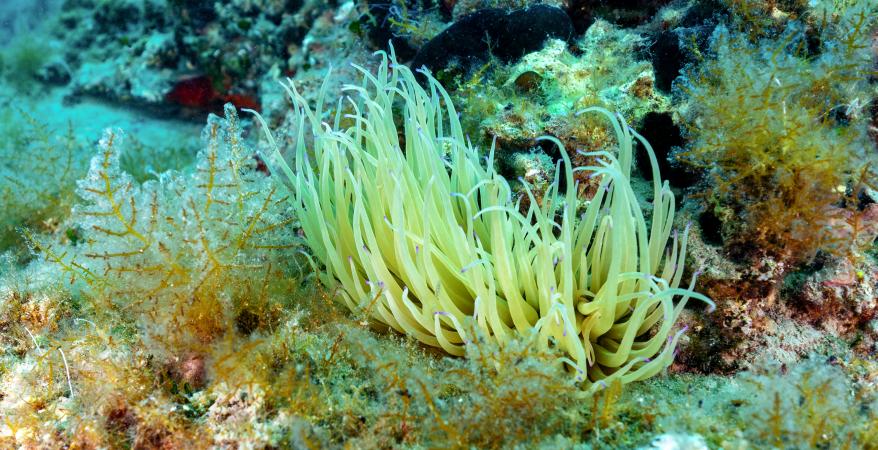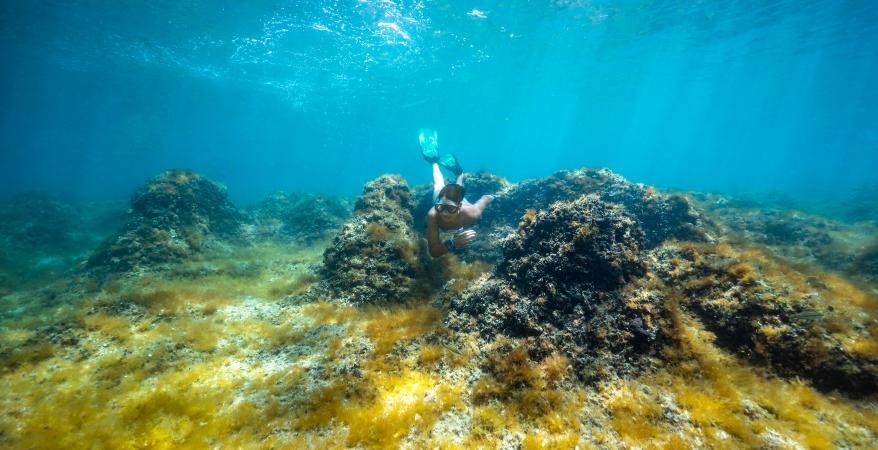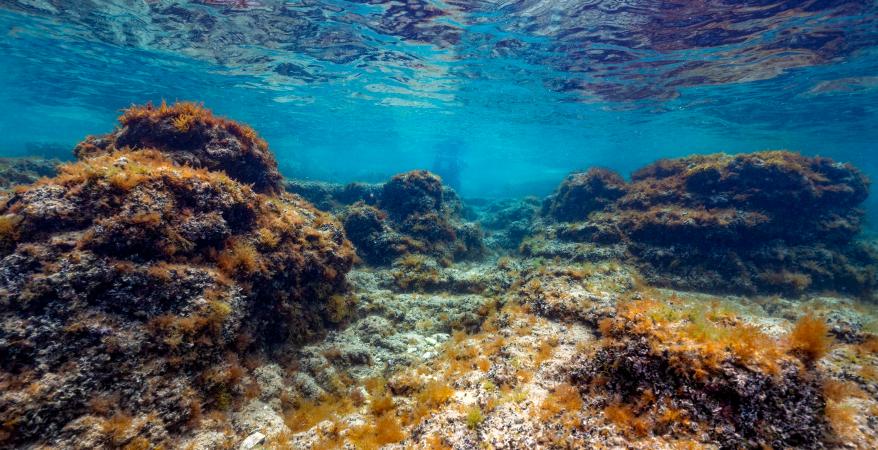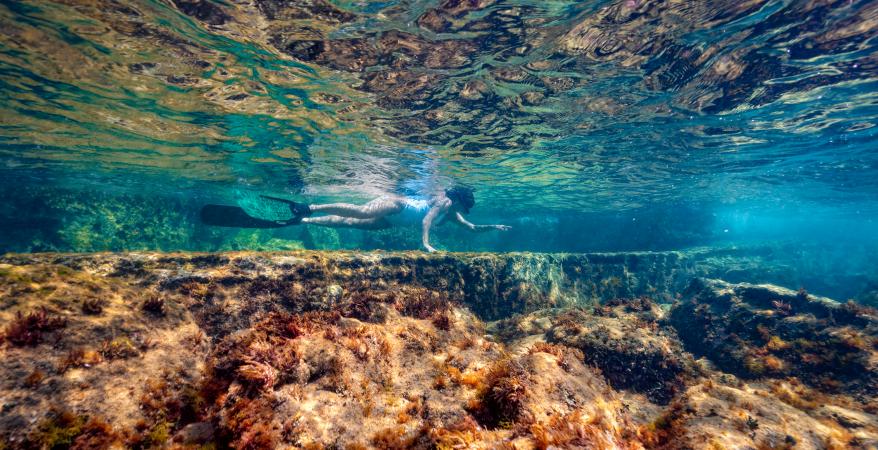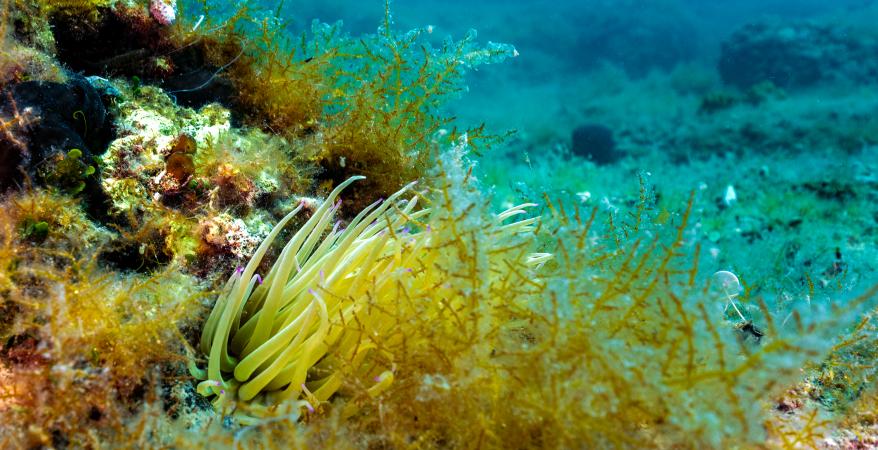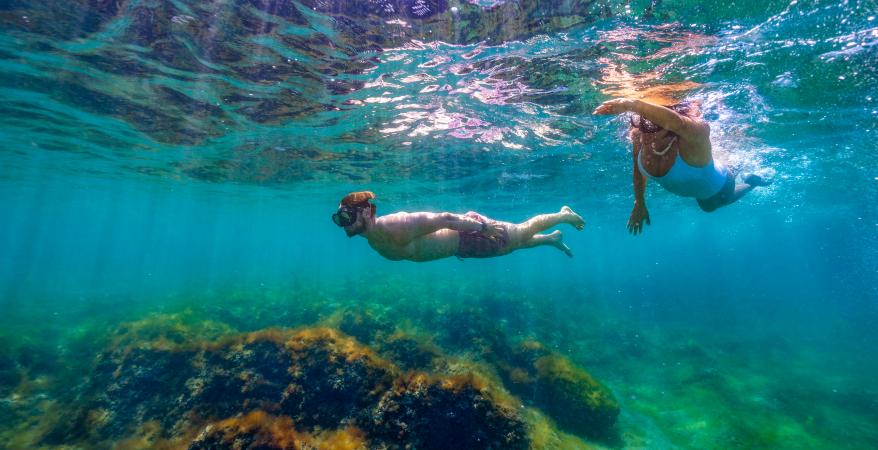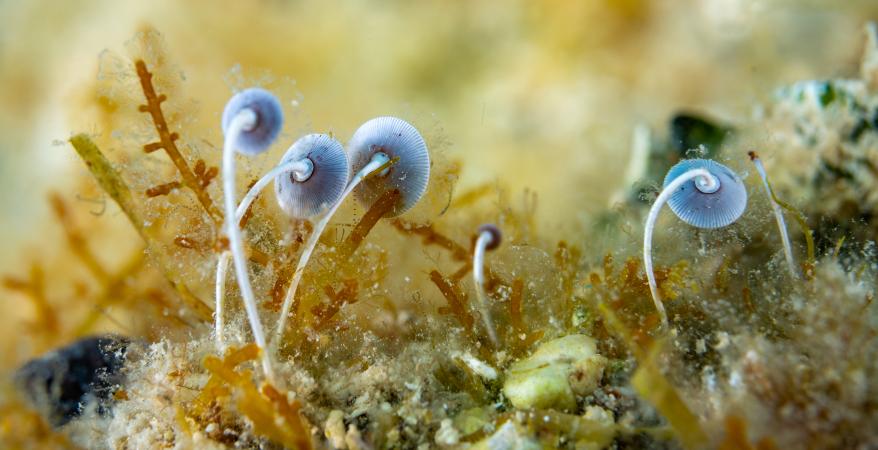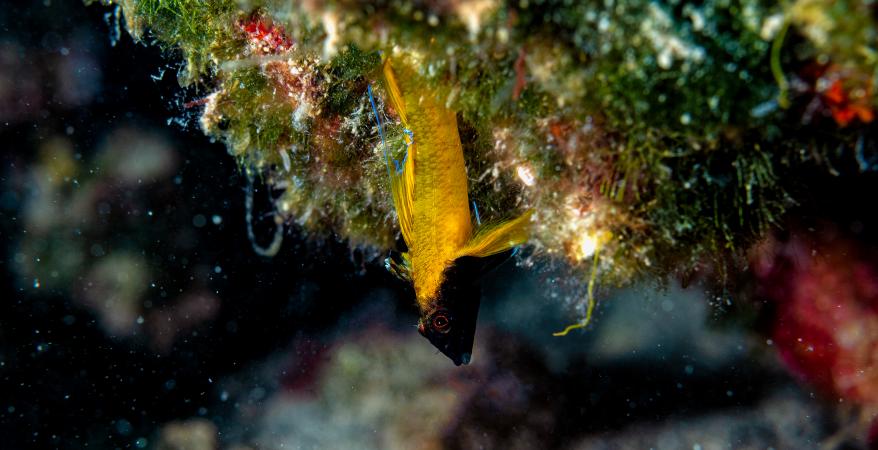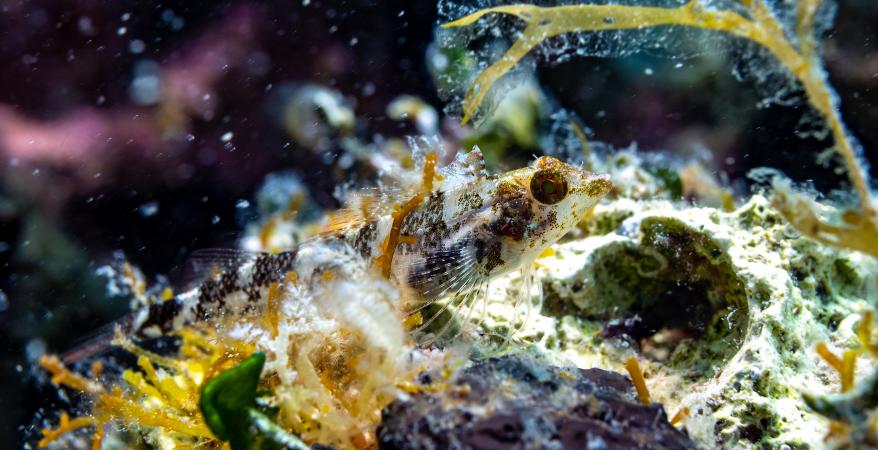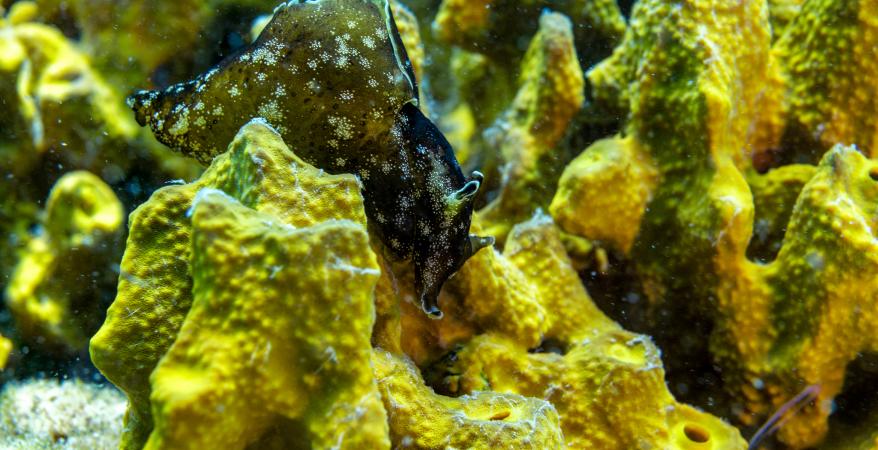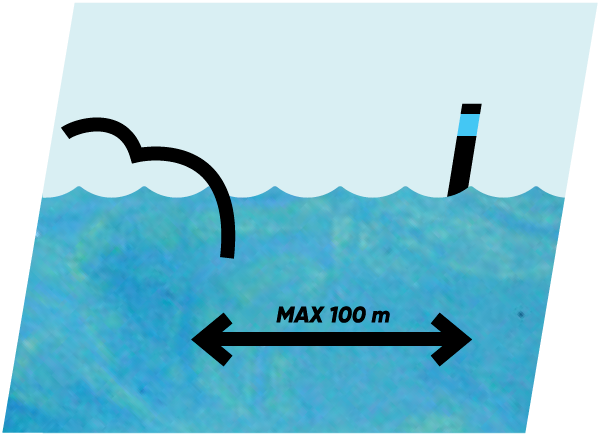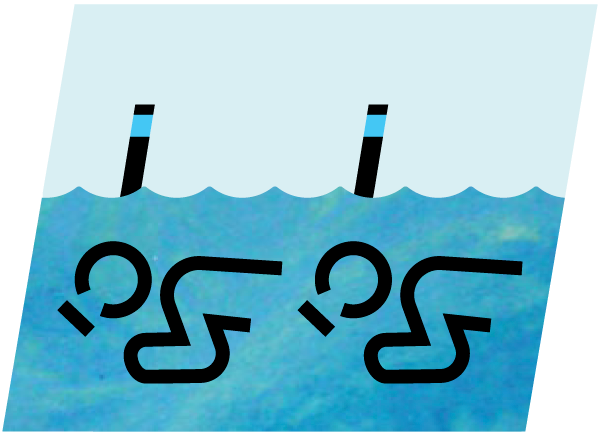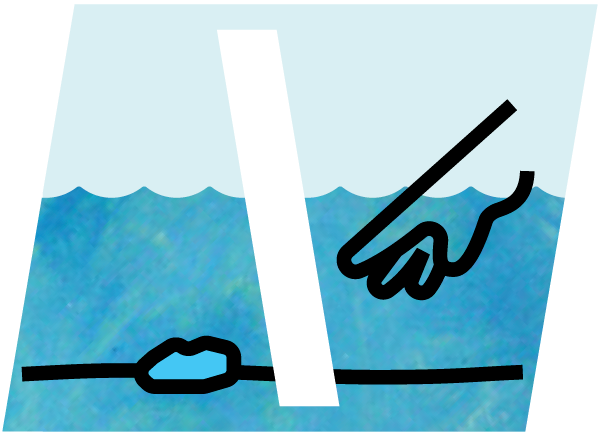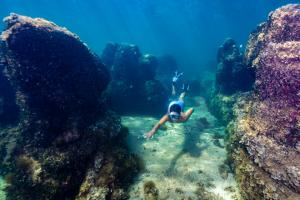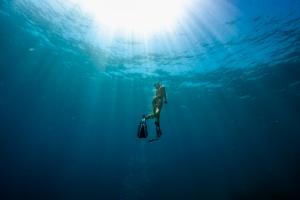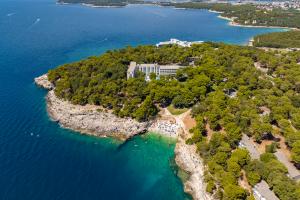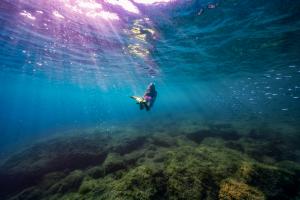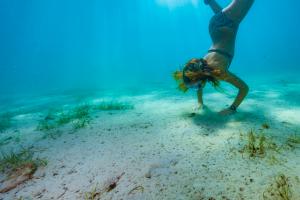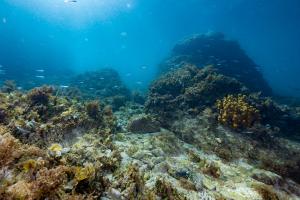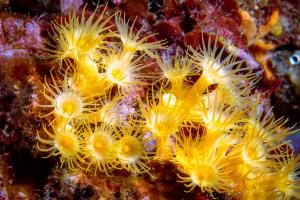Porto Bus
Porto Bus is a beautiful cove on the Bale coast, which can be reached by going through the popular Mon Perin Resort. It is located in the Colona area. You can find the snorkeling location at the foot of the last glamping villa.
Bus Bay is truly special, which you will immediately notice even after a short coastal walk from Porto Bus beach towards the snorkeling location. It is also a protected natural value as part of the Datula - Barbariga area, a special paleontological reserve.
At the end of the promenade, there is a small holm oak grove that provides refuge from the summer heat, and is an ideal place to relax in a hammock and rest your eyes on the blue sea. Whichever path you take down to the rocks, you will come to one of the most beautiful natural sunbathing areas – a flat natural rock. There is always enough room here to be alone.
The horizon is decorated with several small islands. The first and the closest is Colona Island, hidden by greenery which makes it look like a part of the mainland. Somewhat further ahead, you can see a glimpse of the Rovinj archipelago islands, among which the Sveti Ivan na Pučini lighthouse stands out. On the left side is the islet of Porer, which will serve as a landmark for exploring this location, and which roughly extends towards it.
The most convenient entrance to the sea is from the wider sunbathing area, at the very end of the last villa.
There are boulders in the shallows which must not be underestimated because they hide beautiful scenes depending on the tide. The bottom is rocky, gradually descending into the deep. The curiosity of this location is already hidden at a depth of 2 metres. Swim deeper and you will notice five small hills. They appear to be lined up at regular distances. As you move deeper, you will notice a lower, long rock cracked as if there had just been an earthquake.
On the rock you can see a nest of some 30 centimetres in diameter woven from algae. It is a humble home of the ocellated wrasse, only ten centimetres long. The male builds its nest carrying algae twigs in its mouth, constantly grooming it. Wait a moment and it will appear because it is a very hard worker. Its colour is greenish, and you will recognize it by the green-blue spot bordered in red above the gill opening.
Very close, you can find the grey wrasse, another fish that builds its home from algae, snails and shells in the form of a low indented hill. It is grayish-yellow and has a black spot at the base of the tail. It bravely defends its nest and does not move away if you approach it.
Peculiarities of the Porto Bus location
If you continue deeper, at a depth of 4 metres you will notice small holes on the rocky plateau filled with sand. If you look carefully, you will observe that they line up like footprints. Small wonder as the bone fossils of one of the largest dinosaurs that ever walked the earth - the brachiosaurus - were found in the seabed of Bale.
This find, which is the only one of its kind found in the sea, has put Bale on the list of the world paleontological sites. When you look at the seabed with this in mind, it's as if you can suddenly hear the sound of heavy footsteps breaking the rocks, isn't it? Evidence of dinosaurs is real and can be viewed in the Ulika Multimedia Centre above the office of the Bale Municipality Tourist Board.
Exploring further, sandy paths pass between the ridges and extend towards the middle of the bay.
This is where seahorses live at a depth of 2 metres. It is not easy to spot them because they use their colour as excellent camouflage to resemble the environment. But when you see them, be aware that they saw you too, because they have a field of vision of almost 360 degrees.
One of the larger animals you can meet here is the bluetail tuna with a crescent-shaped tail fin. When it hunts its prey it can reach a speed of 100 km/h making the sound resembling a speedboat, but when it sneaks inquisitively it is very slow and silently glides through the water. Although it is an offshore fish, it comes close to the coast and can swim in the shallows in search of small blue fish.
Bus Bay is also a home to cushion coral, a class of animal, round in shape and yellowish in colour, which united colonies can build coral reefs.
Safety first
The Porto Bus snorkeling location is located within the psychological barrier. It is equally interesting to explore its shallows as is its deeper part, but it depends on your snorkeling fitness.
Caring for the sea and its inhabitants
If you are lucky and you have spotted a seahorse - do not touch or disturb it under any circumstances. Seahorses always live in pairs in a specific small area, so if they get lost, it is very unlikely that they will find each other, and it is a well known fact that they are faithful to their partner until the end of their lives.
Protection measures in a special paleontological reserve
Within the reserve, fishing, anchoring and underwater activities, as well as the removal of living and non-living parts of nature or cultural property, are prohibited. Vessels may sail solely in passing at a speed of no more than six (6) knots, while docking is permitted only in extraordinary cases of an accident or bad weather.







